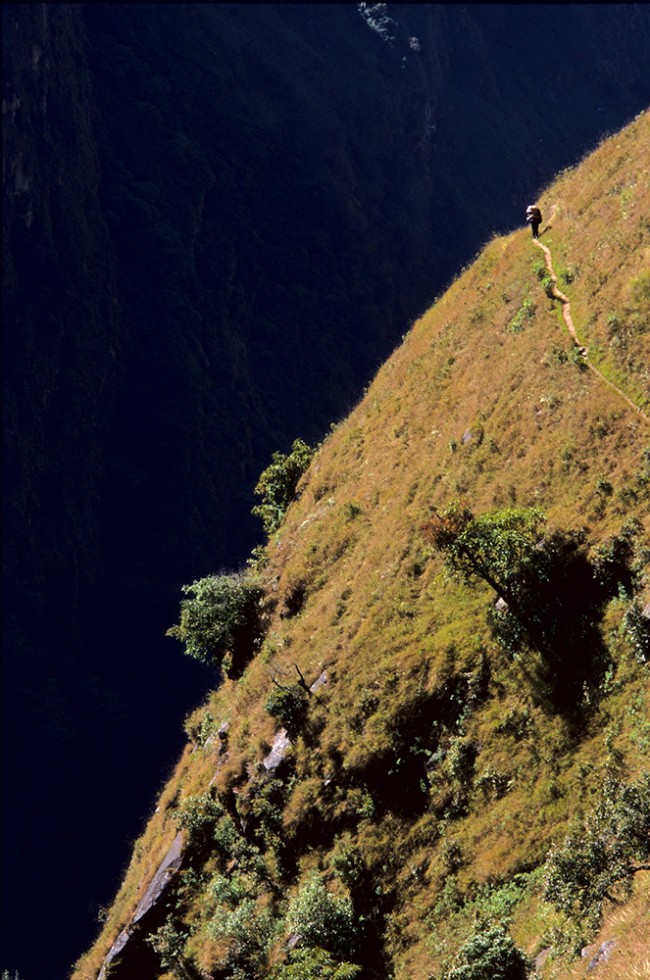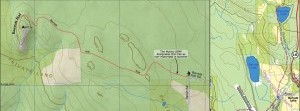
Photo Credit: Dave Quinn
Carrying Cultures
Canoeing is supposed to be easy, especially on a fast-moving, mostly flat river like the Lower Stikine. Just sit back and let the river do the work, right? Watching for riffles and gunnel-eating eddies and boils, life slows down to river time. Easy. But easy is not the word that comes to mind as you schlep impossibly-heavy food barrels and corpse-sized dry bags back and forth from boat to camp; or when you labour under the 18-foot beast of a boat whose bow keeps catching on alders and spruce branches as you haul it from the main river up to Glacier Lake, or around the ice jam at the outlet of Shakes Lake. Whose idea was this side trip anyways?
When sweating under a canoe, food barrel, or overloaded pack my thoughts often turn to the increasingly rare, isolated parts of the world, mostly mountain-bound, rugged landscapes, where life still moves at foot pace.
While roads have brought “civilization” (whatever that means) to much of the modern world, there are still inhabited areas of the great mountain ranges where foot paths provide the only transportation corridor between villages, over passes, or to seasonal grazing and farming areas. Big chunks of the Himalaya still defy machines, roads and all that they represent. Smaller areas of the Andes remain quiet and slow, as do some remote areas of Africa, mostly protected by wetlands or impenetrable forest. Parts of remote Papua New Guinea have mountains, forest, and swamp on their side to stem the threat of a D8 gouging out a flat track fit for motors and wheels. Still not defined by permanent human settlement, much of northern BC is similarly accessible only at a slower pace, although like the rest of the world our roadless heritage is rapidly eroding.
No doubt perspective comes into play here. For those of us privileged enough to roam the planet searching for inspiration and wonder, and for whom quiet, slow, authentic culture and nature are the purest nectar, roadless areas are the height of what remains of the natural world.
Conversely, for those born into the carrying cultures of remote, rugged landscapes, roads may mean something else altogether.
That same porter you cross paths with whose load of smoked cardamom makes you stop and inhale deeply the pungent mix of spice and human sweat, and whose simple garb and lifestyle seems so appealing compared to the craziness of life back home is likely wishing his load could be carried on a truck, and that he could have more than tire-tread sandals on his cracked and flatted arches. Or perhaps that his youngest child was still alive, and might yet be if only she had had a road to get her to a hospital last winter.
The last of the real trails really do speak to self-propelled travellers, however, and sharing these trails as they wind their way through seemingly impenetrable gorges, over passes in the clouds, and through vibrant, ancient forests (forests that inevitably disappear once the road arrives to carry them off to the mills below) is one of the rare, real experiences left on the planet.
The opportunity to truly slow down and travel at foot pace in surroundings that do not threaten to overwhelm that pace is rapidly disappearing. For a real dose of slow, seek out the ancient Inca Trails that connect Andean villages to this day. Walk the old Ruta de los Pioneros that parallels the recently-build Caratera Austral in Patagonian Chile, or seek out the trekking joys still to be found in many parts of the Himalaya. Or better yet, grovel up the old moose and grizzly trails in the Swan Lakes Protected area in the upper Kispiox, hop gingerly across lava beds to explore Mount Edziza, or follow the caribou and moccasin-shaped trails of the Spatzizi Plateau.
The slower you go, the more you experience.



